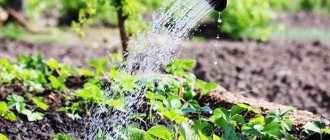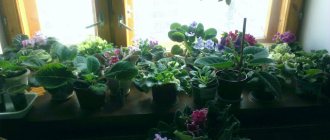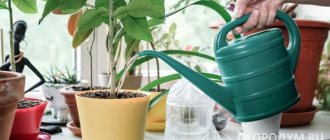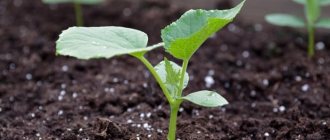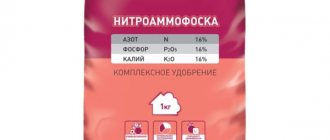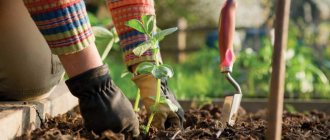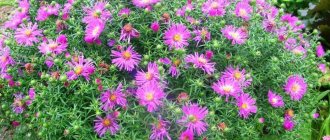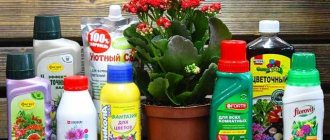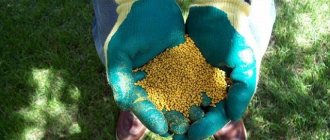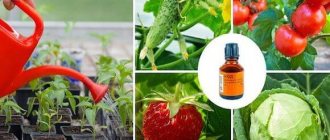Sooner or later, every gardener thinks about how to feed indoor plants so that they develop and bloom better. And this is where the fun begins, because there are many fertilizers. Which one should you choose? Let's figure it out together!
When choosing food for indoor plants, you should consider many factors. The type of plant, its state of health, the period of development - these are just the main points that you should pay attention to before starting the procedure. To orient you in the world of fertilizers, we will consider their main types, advantages and disadvantages.
Mineral fertilizers for indoor plants and flowers:
Mineral fertilizers can be nitrogen, potassium, phosphate or complex. Nitrogen, potassium and phosphorus are the main nutrients for plants.
Depending on the needs of a particular species and stage of development, the ratio and availability of these substances varies.
- Nitrogen fertilizers for indoor plants are mainly used during the active growing season (spring-summer) for maximum growth and development of shoots and leaves. They are mainly used for feeding decorative deciduous species.
- Potassium fertilizers, like nitrogen fertilizers, promote the growth of indoor plants, and together with phosphate fertilizers ensure abundant flowering. Fertilizers with a high content of potassium and phosphorus are used to feed decorative flowering species.
- Complex mineral fertilizers for house flowers are universal and applicable for most species.
Mineral fertilizers for indoor plants are produced mainly in liquid and dry (granules, powder) forms, and also come in tablets, capsules and sticks.
Methods for indicating the mineral content of a liquid solution
- % pure substance i.e. N/P/K – world system
- System of oxides of elements in % i.e. N/P2O5/K2O – CIS and Russia 3) grams per liter of element.
When preparing recipes, it is necessary to take into account that simple and double superphosphates are poorly soluble, and nitrogen fertilizers are divided into amide, ammonium and nitrate based on the quality of nitrogen.
Plants are able to assimilate only the ammonium form and all other species are converted to it through biochemical reactions.
.
Popular mineral fertilizers for plants
.
Advice
The amount of nitrogen-phosphorus-potassium (NPK) allows you to determine what types of plants the fertilizer is intended for.
For example, 15-5-5 is a lot of nitrogen, which means for decorative deciduous plants, 8-10-14 is a lot of phosphorus and potassium, which means for flowering plants, and 7-7-5 is a universal fertilizer.
Purpose of feeding
Nitrogen-containing fertilizers are used to enrich any type of soil with mineral elements, regardless of pH and soil composition. The only difference is the amount of fertilizer applied for different soil compositions. For chernozem, the frequency of application and the amount of fertilizer applied will be less than for poor sandy soil.
The first sign that a plant needs feeding is its appearance. With an insufficient amount of nitrogen in the soil, plant leaves fall for no reason and turn yellow, lose their color, weak formation of new shoots and very weak development are observed.
These signs signal severe soil depletion. Therefore, it is best to apply fertilizer before these signs appear. Nitrogen-containing fertilizers are divided into the following types:
- Amide.
- Nitrate.
- Ammonia.
Liquid fertilizers for indoor plants and flowers
Liquid fertilizers for indoor flowers and plants are a salt concentrate. To feed the plant, liquid fertilizer is diluted with water in a certain proportion, which is indicated in the instructions, and then watered.
- Efficiency . The root system of plants better absorbs nutrients in a liquid state.
- Convenience. It is easy to feed indoor flowers with fertilizer.
- Balanced composition. Liquid complex fertilizers for indoor plants take into account the individual needs of a particular species. For example, special complexes for succulents, orchids or palm trees.
- Possibility of foliar feeding through the stem and leaves. This feeding allows you not to oversaturate the plant with nutrients, but by spraying the leaves to make them brighter and thicker. Thus, the leaves will absorb the required amount of substances, and the plant will not be in danger of an excess of them. It must be remembered that the effectiveness of foliar feeding is maximum for young (1st year) indoor plants. In addition, plants with pubescent or glossy leaves practically do not absorb substances. These include: succulents, palm trees, Saintpaulia and other plants. IMPORTANT! Foliar feeding cannot replace root feeding and is an addition to it during the period of active growth and development of plants.
- Price. Liquid fertilizer for indoor plants is more expensive than granular fertilizer. Therefore, if you have a few plants and flowers, then this is the best option.
Liquid fertilizers for indoor flowers from Agricola
According to most experts, liquid mineral fertilizers are the best option for feeding indoor plants and flowers.
Feasibility of use, methods: general provisions
Regarding chlorine tolerance and potassium requirements, the following groups of crops are distinguished:
- Potassium-loving. There is often a lack of potassium fertilizers that are insensitive to chlorine: most vegetable crops, berries, grains, including sunflower, corn, buckwheat, barley, millet. Sugar beets, fodder beets, spinach, and celery are also potassium-loving.
- Neutral. Cereals and legumes, grasses (perennial, annual) are considered not demanding of potassium.
- Chlorophobic. Excess chlorine is perceived negatively by: tobacco and grapes, potatoes and tomatoes, beans, cucumbers, berry bushes. Being potassium-loving, they need to regulate doses, timing, and application methods.
The so-called chlorine included in the preparation. chlorophobic plants have a negative effect. Thus, in nightshade and root vegetables, chlorine reduces the concentration of starch. In the nutritional scheme for potatoes, tomatoes, grapes, and tobacco, it is embedded in deeper, more humid layers of soil, from where chlorine is washed out. As a result of positive adsorption, potassium is retained in the arable layer.
In the case of chlorophobic crops, taking into account the ability to migrate, potassium is added during autumn plowing. In closed ground - when planting seedlings, with root feeding.
Granulated white potassium, due to its small, instant fraction, is more often used in case of severe potassium starvation for foliar feeding.
The mechanism of fertilizer consumption by different crops is subtle. Some stop absorbing it already at the flowering stage (flax), others - at the so-called stage. milky ripeness (legumes, grains). Vegetable crops and berries often consume it relatively evenly during the growing season - potatoes, cabbage, beets, berries, etc. In addition, the advisability of application depends on the composition of the soil and climatic conditions. Therefore, there are no universal methods for calculating doses, instructions, or recipes. There is experience gained over the years, extensive knowledge and practice, which they are guided by - as the best of instructions.
Dry mineral fertilizers
Dry fertilizer is a mixture of minerals in the form of granules or crystals. To feed, the dry mixture is diluted in water in strict accordance with the instructions so that there is no sediment at the bottom and the solution is completely homogeneous.
A small package of mineral fertilizer is usually diluted in 10-15 liters of water, so this is the best option for a large home garden.
Sticks for indoor plants
Tablets, sticks or capsules are long-acting fertilizers, i.e. minerals enter the plant gradually. One stick provides the plant with an average of three months (sometimes from 2 to 6).
The fertilizer usually contains nitrogen, potassium, magnesium, phosphorus, which is complemented by boron, manganese, iron, copper, molybdenum or zinc.
Recently, sticks against pests of indoor plants , which, in addition to feeding, help in the fight against insects (insecticide). Fertilizer sticks for pests contain the substance imidacloprid.
Application
Depending on the diameter of the container, calculate the number of sticks per indoor plant. It turns out something like this: 1 stick – up to 10 cm, 2 – 11-15 cm, 3 – 16-20 cm, 4 – 21-25 cm. The sticks are inserted into the substrate to a depth of 4-5 cm from the edge of the container at a distance of 1 -3 cm, and then the plant is watered.
.
The principle of operation of fertilizer sticks in a potted plant
.
Reviews
Opinions on the effectiveness of sticks for indoor plants among gardeners vary significantly. Experienced gardeners believe that using fertilizers in the form of sticks does more harm than good.
Near the sticks in the substrate there is an increased concentration of elements and insecticide, which negatively affects the root system.
Therefore, it is better to use fertilizer (for example, liquid with humic acids) and insecticide separately.
Advice
Objectively, we can say that when using nutrient sticks, it is better to break them into small pieces (crush), this way you will ensure a more uniform absorption of minerals by the plant.
PRICE. Depending on the manufacturer, in terms of one piece from 2 euro cents to 5.
How to prepare mineral fertilizer yourself?
- Nitrogen fertilizer: ammonium sulfate, ammonium nitrate or urea - 1 g per 1 liter of water.
- Potassium fertilizer: potassium sulfate, potassium salt or potassium chloride - 1.5 g per 1 liter of water.
- Phosphate fertilizer: dry superphosphate – 6 grams per 1 liter of water or 1 part per 30 parts of soil.
Efficiency relative to soil composition
The effectiveness of potassium will be higher on soils with the so-called. low absorption capacity - sandy, sandy loam, sod-podzolic, red soil, peat-bog and floodplain soil due to the easy migration of chlorine into the underlying layers. It will give good results in moist areas on soddy-podzolic, podzolized, leached chernozem and loam, and on gray forest soils.
On gray soil, chestnut soils, typical southern chernozem, the effect is little pronounced. Potassium is used in case of deficiency for potassium-loving crops - vegetables, beets, sunflowers, etc., on gray soil and chestnut soils with sufficient irrigation.
Salt marshes, as a rule, are rich in potassium: the use of potassium-containing preparations is not practiced on them.
Attention! When applied to acidic, strongly acidic soils, an increase in pH is observed due to the content of aluminum and exchangeable hydrogen, due to the physiological acidity of potassium. Negative consequences are observed only with potassium-loving crops with long-term use - this is why crop rotation is important.
Organic fertilizers for indoor plants
Organic fertilizers include: manure, litter, compost, humus - excellent suppliers of nitrogen, and wood ash - an excellent source of potassium and calcium.
There is a lot of debate among specialists and experienced gardeners regarding the advisability of feeding indoor plants with organic fertilizers.
We can say for sure that organic fertilizers make the soil mixture more moisture- and breathable, especially the periodic application of humus, and stimulate the active growth of green mass.
Wood ash, according to leading experts, is the most perfect organic fertilizer for indoor plants.
We talked about it in detail in the additional material to this article about home fertilizers.
Peculiarities
Organic or natural fertilizers for indoor plants have their own specifics. Organic fertilizers are not suitable for bulbous and corm species, and variegated decorative-deciduous plants can become ordinary green if improperly fertilized.
Preparation
Before feeding plants, organic matter must be sterilized. Sterilization is carried out only with the help of fire, and after that it is kept for 20-25 days to restore the biological environment.
- Therefore, experts advise buying organic supplements in ready-made form.
Application
Flower growers recommend using mullein infusion (one tablespoon per one liter of water) or bird droppings (one teaspoon per one liter of water).
This fertilizer is recommended for use for large and fast-growing plants, and it has a particularly beneficial effect on asparagus, vines, indoor roses, palm trees, pelargonium and primrose.
| A unique complex fertilizer increases the yield up to 10 times! |
Vermicompost for indoor plants
Many experienced gardeners believe that it is better to use organic fertilizers for indoor plants (except ash) based on vermicompost (Vermistim, Humisol).
In the composition of such fertilizers, pay attention to the % of humic substances (salts or acids).
Application of vermicompost
We offer ways to use vermicompost for indoor plants and seedlings, namely the substance itself, and not a liquid concentrate (extract).
- For nutrient substrate. Vermicompost, garden soil, sand – 1:4:1. This universal recipe is suitable for planting and replanting many types of indoor plants, but certain types require individual amendments.
- To accelerate root formation. 1 tsp. per 100 ml of water - place a cutting of a houseplant in this nutrient solution.
- For mulching and fertilizing. A layer of soil mixture (1-2 cm) is removed from above and vermicompost is poured in its place, and then watered with water. This bookmark lasts for about 2-3 months.
- For feeding. 5-6 tbsp. l. Vermicompost is dissolved in one liter of water and left for 24 hours. Then water the plants and flowers every 10-14 days. Before this, the solution must be stirred.
.
One of the options for organic fertilizer with vermicompost
.
Peculiarities
The pH of vermicompost is 6.5-7.5, almost neutral. Vermicompost may contain worker worms, but they do not damage the plant, and after they grow up they can be thrown outside. It is undesirable to sterilize vermicompost - its beneficial properties are lost. Real vermicompost does not mold.
Calcium
The divalent calcium ion is of great importance in plant life. It is present in all cellular structures and stabilizes their functions.
Calcium is especially important for the normal development and activity of the root system.
With a deficiency of this element, the formation and growth of roots is delayed. Lack of calcium primarily affects the development of young organs. A characteristic sign is discoloration of the growth cone and young leaves, as well as their curling. Brown spots are also observed on young leaves.
Excess calcium negatively affects the absorption of iron, zinc, and manganese.
up
up
Fertilizers for flowering indoor plants
Flowering indoor plants are fed with a special fertilizer, as certain minerals are needed for abundant flowering.
Fertilizer for flowering indoor plants allows you to achieve better and longer flowering, prevents buds from falling off and helps produce fruit.
Basic fertilizer for flowering, approximate composition: nitrogen (N) - 10 g/liter, phosphorus (P) 20 g/liter, potassium (K) 30 g per 10 liters of water + vitamins B1, B6 and PP.
Castor oil
Fertilizing with castor oil, according to some gardeners, is very effective for beautifully flowering plant species at the time of bud setting (budding) - 1 tsp. for 1 liter of water.
Liquid fertilizers for feeding flowering indoor plants
- For young plants. Potassium salt, ammonium nitrate, superphosphate - 15:10:15 g per 10 liters of water.
- Before budding for flowering. Potassium salt, ammonium nitrate, superphosphate - 15:20:25 g per 10 liters of water.
- After flowering. Potassium salt, ammonium nitrate, superphosphate - 10:20:25 g per 10 liters of water.
Recommendations
- Flowering indoor plants need to be fed as soon as the buds appear and continue until flowering ends.
- Carefully observe the dosage and frequency of fertilizing - an excess of minerals has a negative effect on the plant.
- An excess of nitrogen is especially undesirable, as it stimulates the growth of green mass and slows down flowering.
- Potassium and phosphorus are the key to successful flowering and fruiting. Some gardeners prefer to use “Ideal” fertilizer for flowering indoor plants with a high phosphorus content.
- Before flowering, phosphorus is the most essential substance for a plant; if it is deficient, growth and development are delayed, brownish-purple spots appear on the leaves, and they themselves curl.
.
Liquid fertilizers for indoor plants from Pokon: for flowering, decorative and deciduous species and universal.
.
Nitrogen
Nitrogen compounds used by the plant can be divided into the following groups:
- nitrates, or salts of nitric acid;
- ammonium salts;
- various organic nitrogen compounds (water-soluble amino acids, urea);
- nitrites, or salts of nitrous acid.
Nitrogen promotes the growth of stems and leaves. With enough nitrogen, the leaves acquire a dark green color and become juicy.
If it is lacking in the soil, plant development slows down, leaves become smaller, turn yellow, die, the shape and color of flowers change, and buds fall off. This phenomenon is called chlorosis.
But frequent application of nitrogen is also harmful: plants grow strongly and bloom poorly.
Bor
The value of boron for a plant is very diverse.
With a lack of boron, the development of the conduction system is primarily impaired. Assimilates formed in the leaves cannot move to other plant organs, which inhibits photosynthesis.
A lack of boron causes the death of young parts of the plant, retards the growth of all its organs, disrupts the normal development of roots, buds and leaves, the top becomes brown and falls off.
The development of reproductive organs is also greatly affected by boron deficiency. Boron toxicosis is especially often observed in indoor plants, which is expressed in the browning of the edges of the leaf blade. First, the edges of older leaves turn brown, then younger ones, and finally the entire leaf blade turns brown and dies.
Share the link
